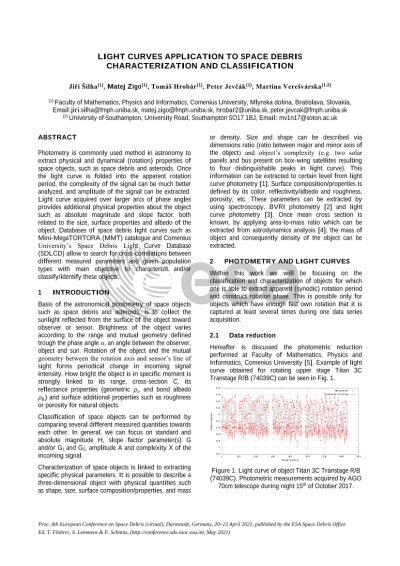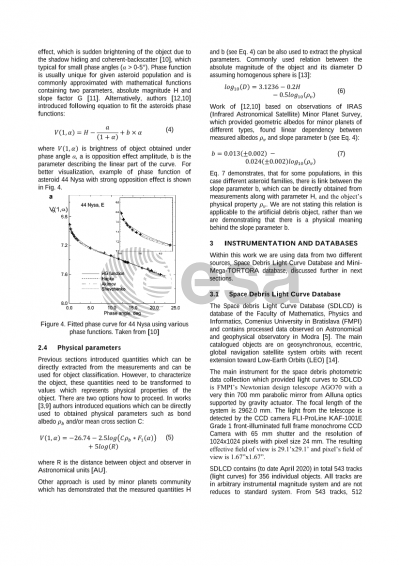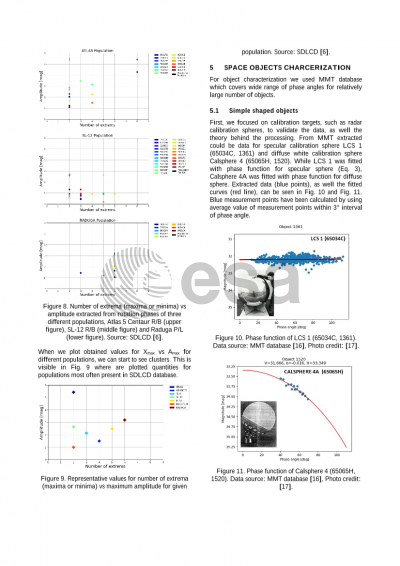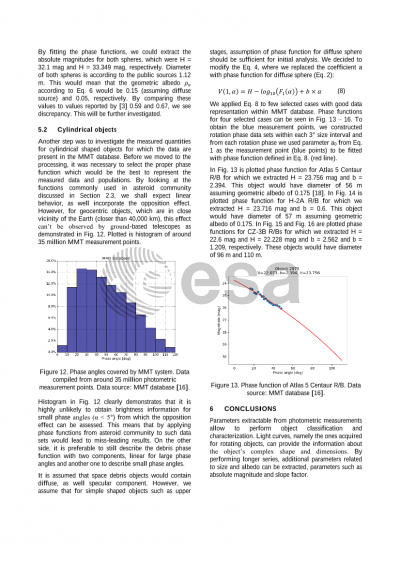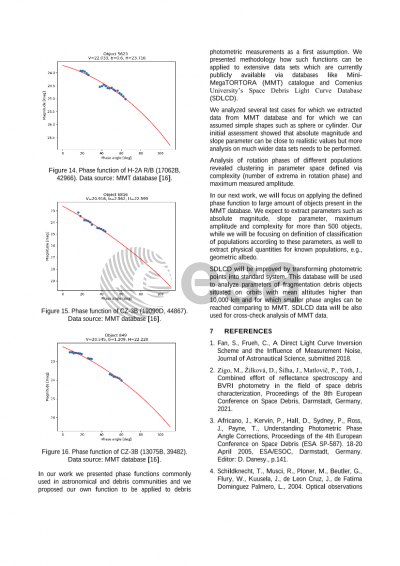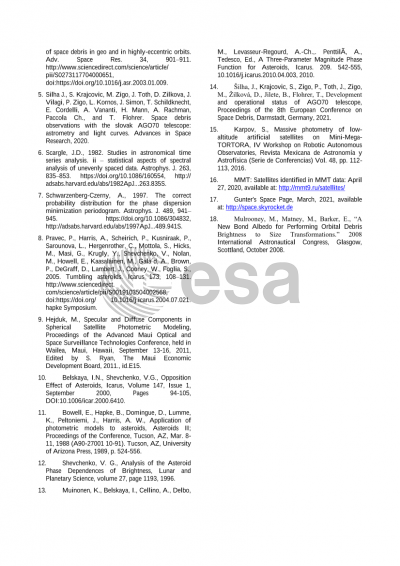Document details
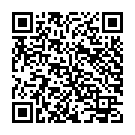
Abstract
Photometry is commonly used method in astronomy to characterize physical and dynamical (rotation) properties of space objects, such as asteroids or variable stars. The observations of the 0.7-meter aperture Newton telescope situated at the Astronomical and geophysical observatory in Modra (AGO) is primary focused on the space debris objects such as defunct satellites, upper stages, and fragmentation pieces. Large part of the related science is dedicated to characterization of debris object by using different photometric methods such as BVRI photometry, light curves acquisition and construction, and phase function parameters estimation.
Photometric light curves of rotating objects contain complex information about the object’s shape and reflectivity properties. Once the light curve is folded into the apparent rotation period, the complexity of the signal can be much better analyzed focusing on the number of extrema, maxima and minima, present in the signal. Amplitude of the signal is also directly related to the physical properties of the object. Once combined, these two parameters can be used for object identification. Phase function obtained from light curves acquired over larger arcs of phase angles provides additional physical properties about the object. These properties are the absolute magnitude, slope parameter, a parameter directly related to the roughness of the object’s surface, and eventually albedo (reflectance) or the size of the object. All these parameters help to better characterize the object.
In our work we will present the before mentioned physical parameters for different types of debris populations, such as upper stages and non-functional spacecraft, extracted from the Comenius University’s public catalogue of light curves acquired by AGO70 and extracted from the Russian Mini-MegaTORTORA (MMT) catalogue, which contains light curves for more than 5000 space debris objects. Large statistical data allows us to search for cross-correlations between different physical parameters and given population types with main objective to characterize and/or identify these objects.
Preview
